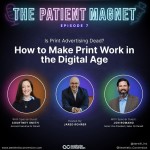Enhancing Your Creative Teams with the Help of AI
Artificial Intelligence (AI) is a trending topic amongst creative teams and marketers. AI technology can do many impressive things. It can produce text and images, spanning blogs, emails, artwork, and social media graphics, to name a few.
The number of new AI software tools leaves teams wondering how it will affect their jobs. Instead of fearing AI, creative teams must embrace it to enhance their workflows. Teams that do this will produce stand-out content and give their company an advantage.
AI will enhance creative and marketing teams rather than replace them. Let’s further explore why it won’t replace these teams and how it can be embraced.
Why AI Won’t Replace Creative Teams
AI will not replace creative teams because it lacks human creativity and emotion. Plus, even with the best technology, AI still requires supervision.
Lack of Human Creativity
While AI tools can create content, they lack originality, intuition, empathy, and emotion. Businesses should aim to foster genuine, unique emotional connections with their customers. Emotion and storytelling are essential when connecting with an audience and driving them to respond to a marketing ad. AI can’t create this on its own. It does not have the ability to understand human emotion, intuition, and empathy. AI does not have human experiences to apply to the content it produces. AI machines lack these human elements that go into understanding what makes good marketing effective and bad marketing perform poorly.
AI machines cannot come up with new ideas. Instead, AI follows instructions and works to create based on the query provided. So, while it can produce an article or an image, AI uses elements that already exist rather than coming up with something new.
Requires Supervision and Direction
Another reason why AI won’t replace creative teams is because it needs someone to prompt it and supply direction. A human needs to operate and oversee AI. While AI can create imagery, a human still needs to enter a search term or phrase and suggest what the image needs to include. The machine can create what it is told, but a human needs to evaluate and edit the content it produces. When AI produces articles or text, a person will need to read and edit to ensure the text aligns with the search. The person supervising and reviewing the text will often need to add storytelling elements and ensure the company’s brand standards and verbiage are used throughout the written piece.
How Embracing AI Can Enhance Creative Teams
There have been many different types of game-changing technologies throughout history. Calculators, computers, word processors, and search engines all raised concerns in the past. Instead of replacing jobs, these tools changed how companies got things done.
AI will be similar in that it won’t replace creative teams. Instead, creative teams can leverage it to enhance current workflows. By embracing AI, creative teams can be more effective and efficient. AI can guide and support creative and marketing teams tasked to create an increasing amount of content to fulfill the needs of consumers and keep up with competitors. It will also help these teams save time to apply their expertise in different ways.
We asked OpenAI how generative AI can help creative professionals create content. When it comes to embracing AI and how teams can benefit, this is what it had to say:
AI can be a valuable tool for creative professionals to help them create content. Here are some ways generative AI can assist:
- Idea generation. AI can generate new and innovative ideas by analyzing vast amounts of data and patterns. It can provide creative professionals with new perspectives and concepts to spark inspiration.
- Content creation. AI can automate the content creation process by generating text, images, or even music. Language models like GPT-3 can generate articles, stories, or scripts based on a prompt. AI-powered image generators can produce unique visuals or help with photo editing or style transfer.
- Design assistance. AI tools can aid designers in creating appealing content. They can generate design suggestions and assist in creating layouts. It can even generate color palettes based on specific requirements. AI can also help with tasks like logo design, font selection, or illustrations.
- Automation and efficiency. AI can automate repetitive or time-consuming tasks. This allows creative professionals to focus on higher-level activities. For example, AI-powered video editing tools can help with video stabilization, scene detection, or automated captioning. This can speed up the content creation process and free up time for other projects.
- Feedback and improvement. Generative AI can provide valuable feedback on content quality and suggest improvements. For instance, language models can analyze the tone, grammar, and readability of text. In some cases, it can even provide suggestions for enhancement. AI-powered analytics tools can analyze engagement metrics and user feedback. This can help you optimize content performance.
Add AI to Your Creative Teams’ Toolbox
The real threat to creative and marketing teams is not embracing AI capabilities. AI is a powerful tool that should act as an assistant rather than a replacement for marketing. Creative professionals should leverage AI to enhance their creative process. Then, they can lean on their expertise to make final decisions and add a personal touch to the content.
Combining human creativity and AI technology can lead to innovative and effective solutions. Together, AI and humans can give your business a competitive advantage. It’s time to embrace AI and see the many benefits it can bring to your creative workflows. Plus, you’ll see the positive results it brings to your marketing mail and digital ads.



